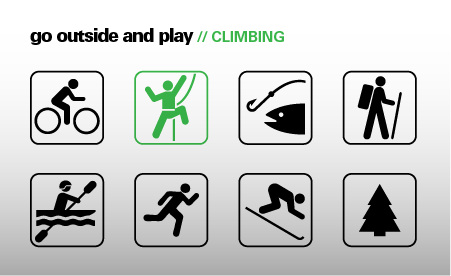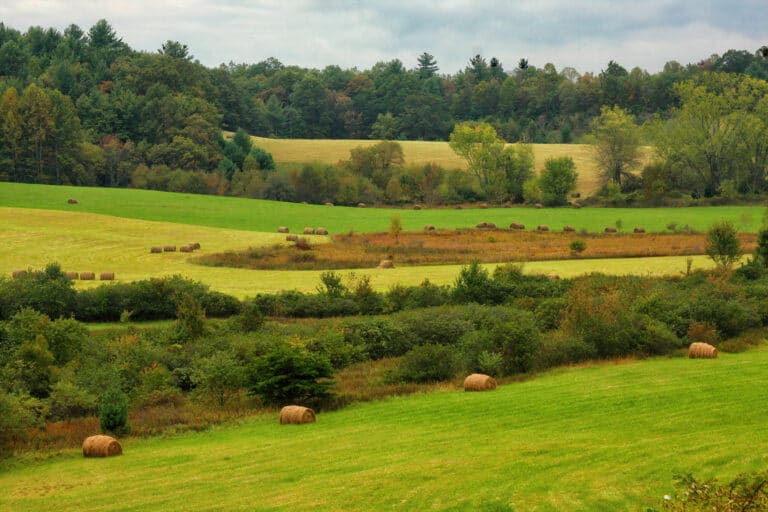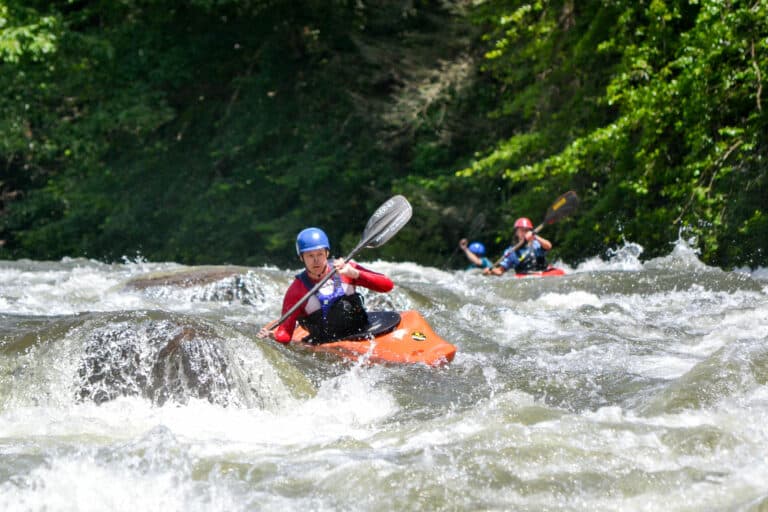Top five mistakes most new climbers make, and how you can avoid them.
[1] Forgetting your feet
“Most beginners try to muscle up a route, using all upper body and dragging their feet up the rock,” says Ryan Beasley, owner of Rock Dimensions, a climbing guide and instructional service. “But if you use your feet well and keep your hips in balance, you’ll be able to climb longer and more efficiently.”
Avoid It: During your climb, place two foot moves for every one hand move.
[2] Reaching for the stars
“Beginners have a tendency to reach for holds way above their head with every move,” says Seneca Rocks climbing guide Alan Goldbetter. “This puts a lot of emphasis on the upper body and can lead to injury.”
Avoid It: Find an easy route and climb it without raising your hands above your head.
[3] Overtraining your hands
“I see climbers with those squeeze grips all the time. They look cool, but it’s easy to overdo it on hand exercises,” says Greg Perry, co-founder of Atlanta Rocks Climbing Gym. “Your hand is made up predominantly of tendons and ligaments, not muscles.”
Avoid It: You need hand strength, but you’ll get it naturally by climbing. Ditch the squeeze balls.
[4] Sacrificing safety for glory
It’s easy to get in over your head when climbing. If you’re too gung-ho, you might find yourself on a climb that’s out of your league with suspect anchors and knots that aren’t keeping you as safe as they should.
Avoid It: “There’s a progression to climbing,” says Swis Stockton of Granite Arches. “Climb smaller rocks first, learn some technique, then move on to bigger rocks.”
[5] Faking an anchor
“There are plenty of people out there setting up anchors that don’t have enough knowledge,” Ryan Beasley says. “A lot of times, they’ll just try to replicate what they saw other people do, but they don’t have the core concepts of anchor building down. Every site is different, requiring a different approach to the anchor.
Avoid it: After taking the appropriate anchor building and top roping classes, you’ll want to start climbing on your own. How do you know when you’re ready? Ask a guide or mentor to brutally assess your anchor-building and knot-tying skills. Spending an extra day or two working on the fundamentals is better than risking injury by climbing with uncertain technique.








